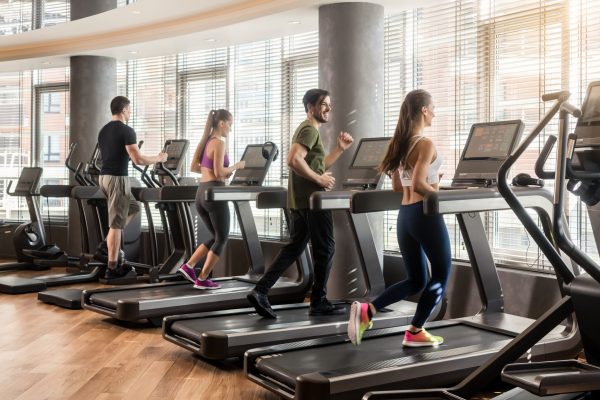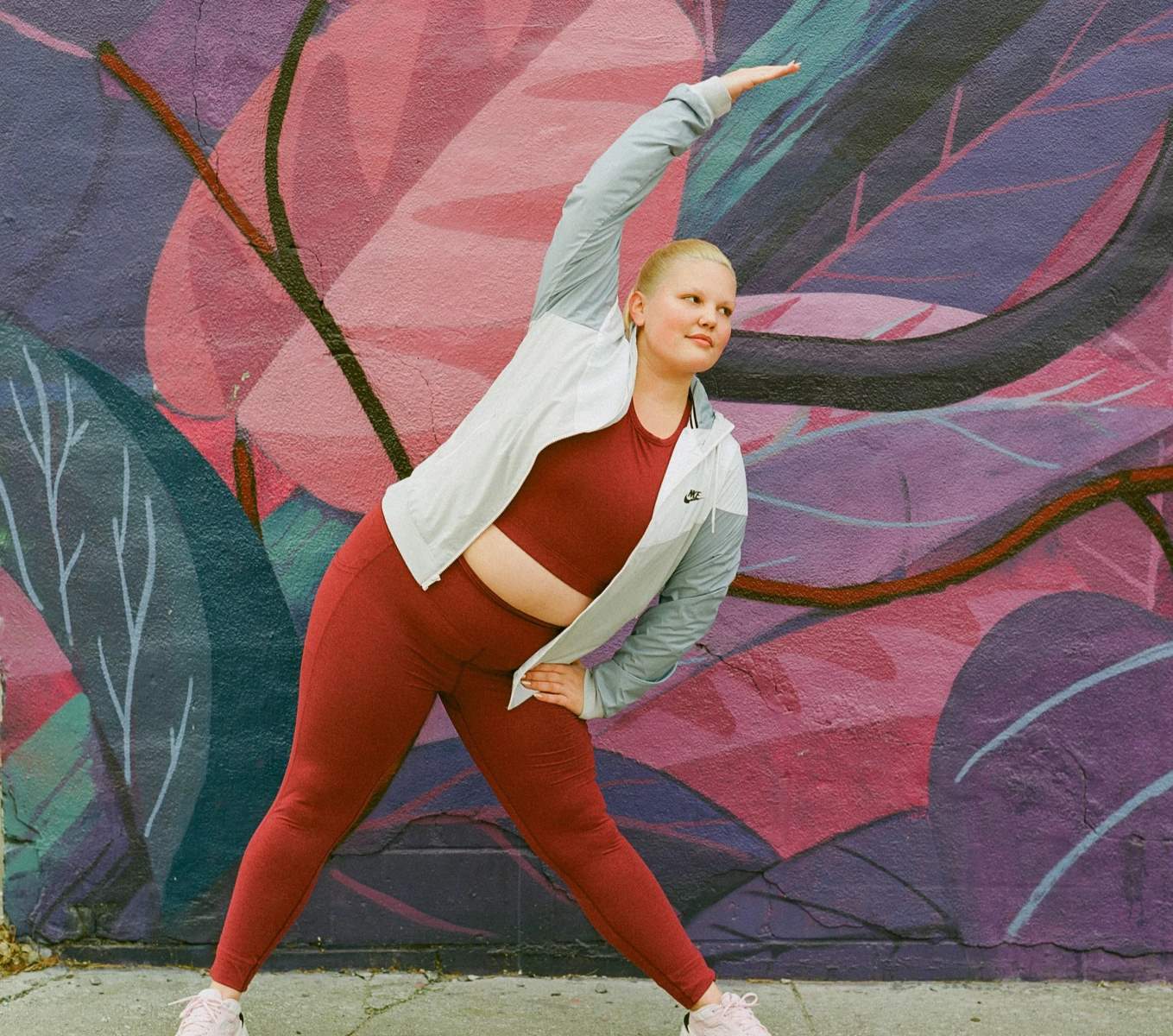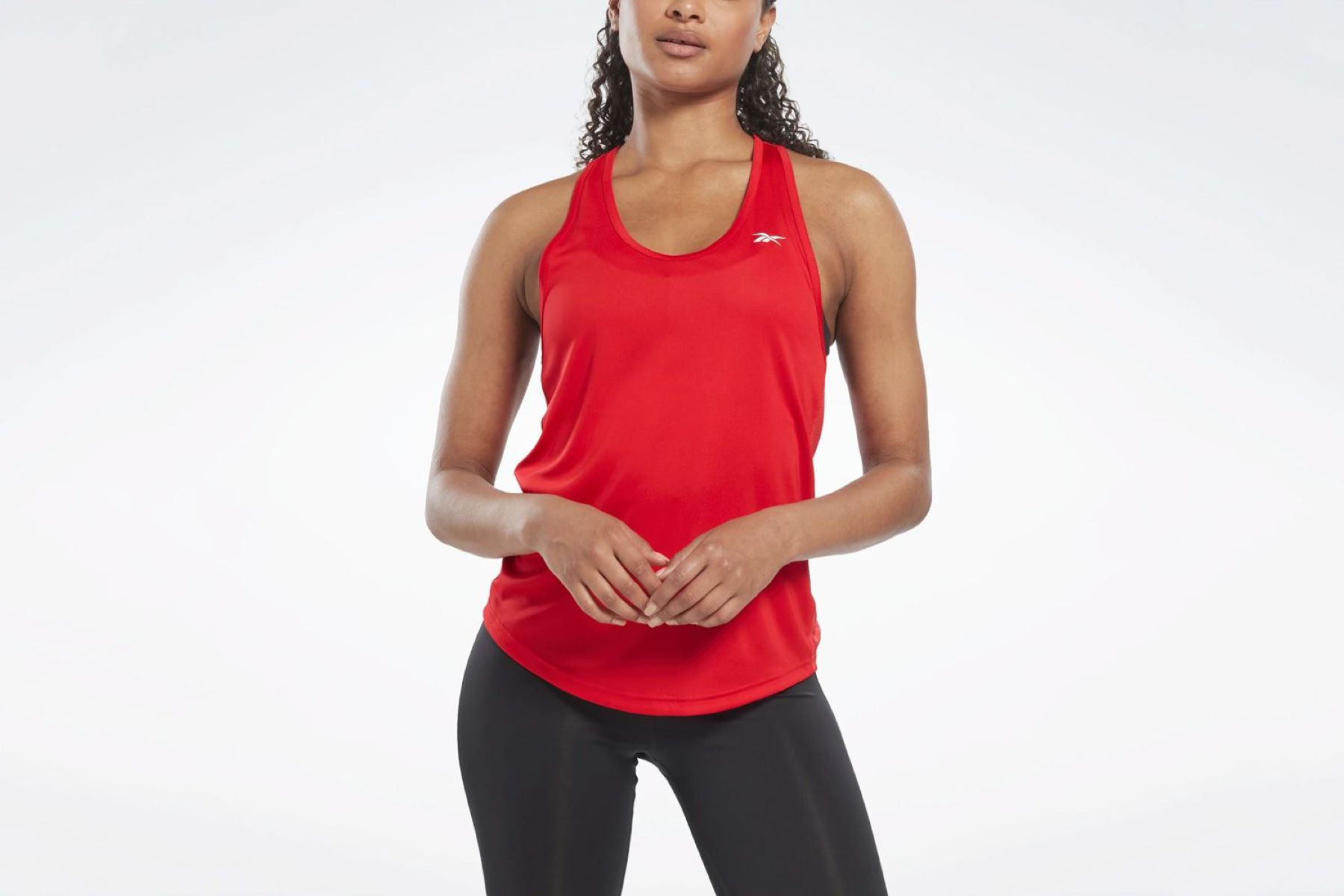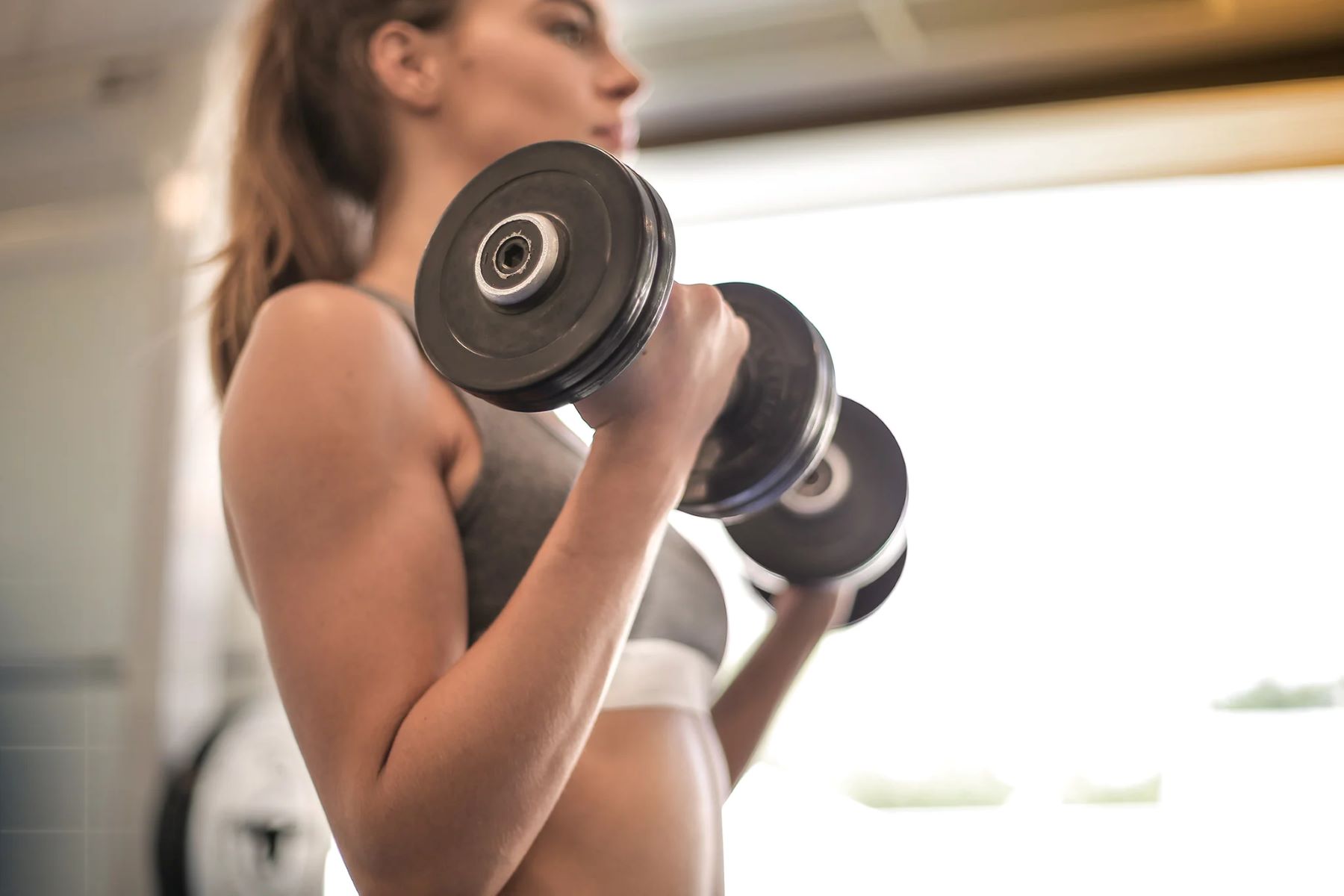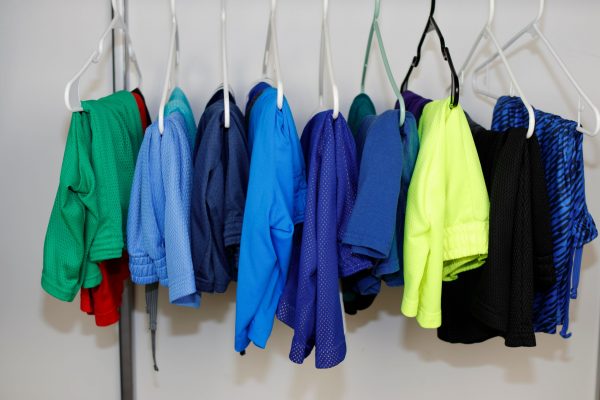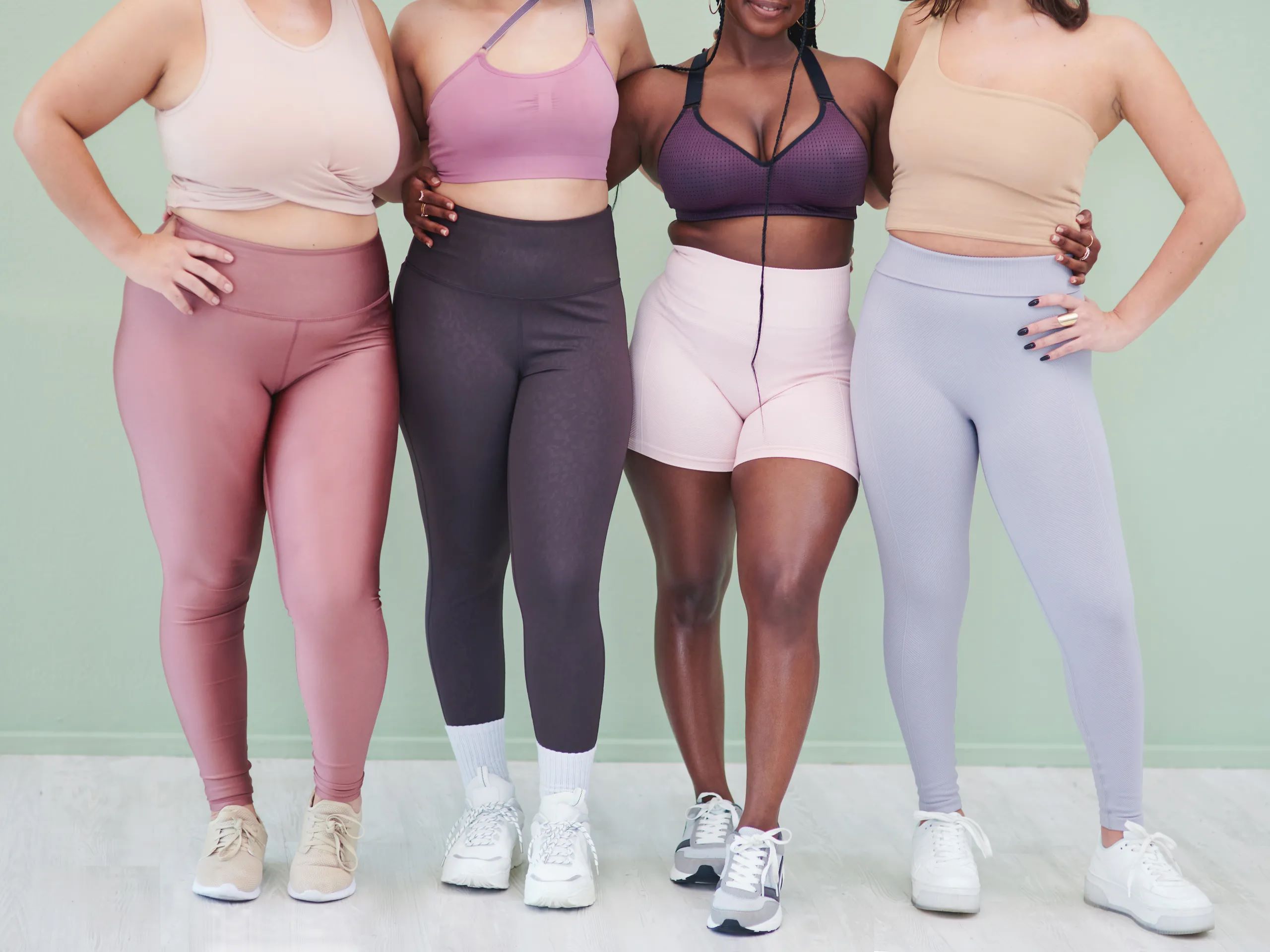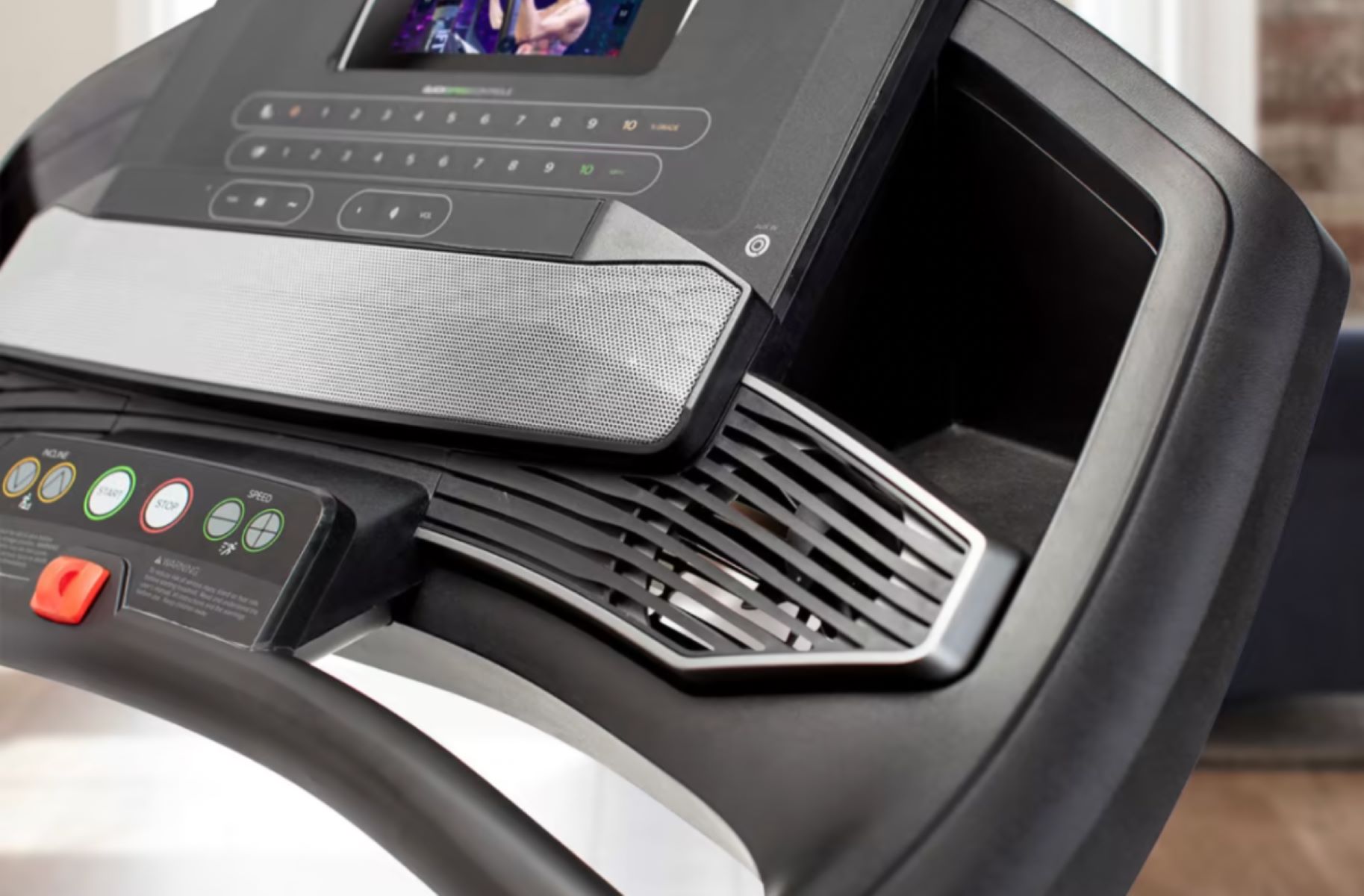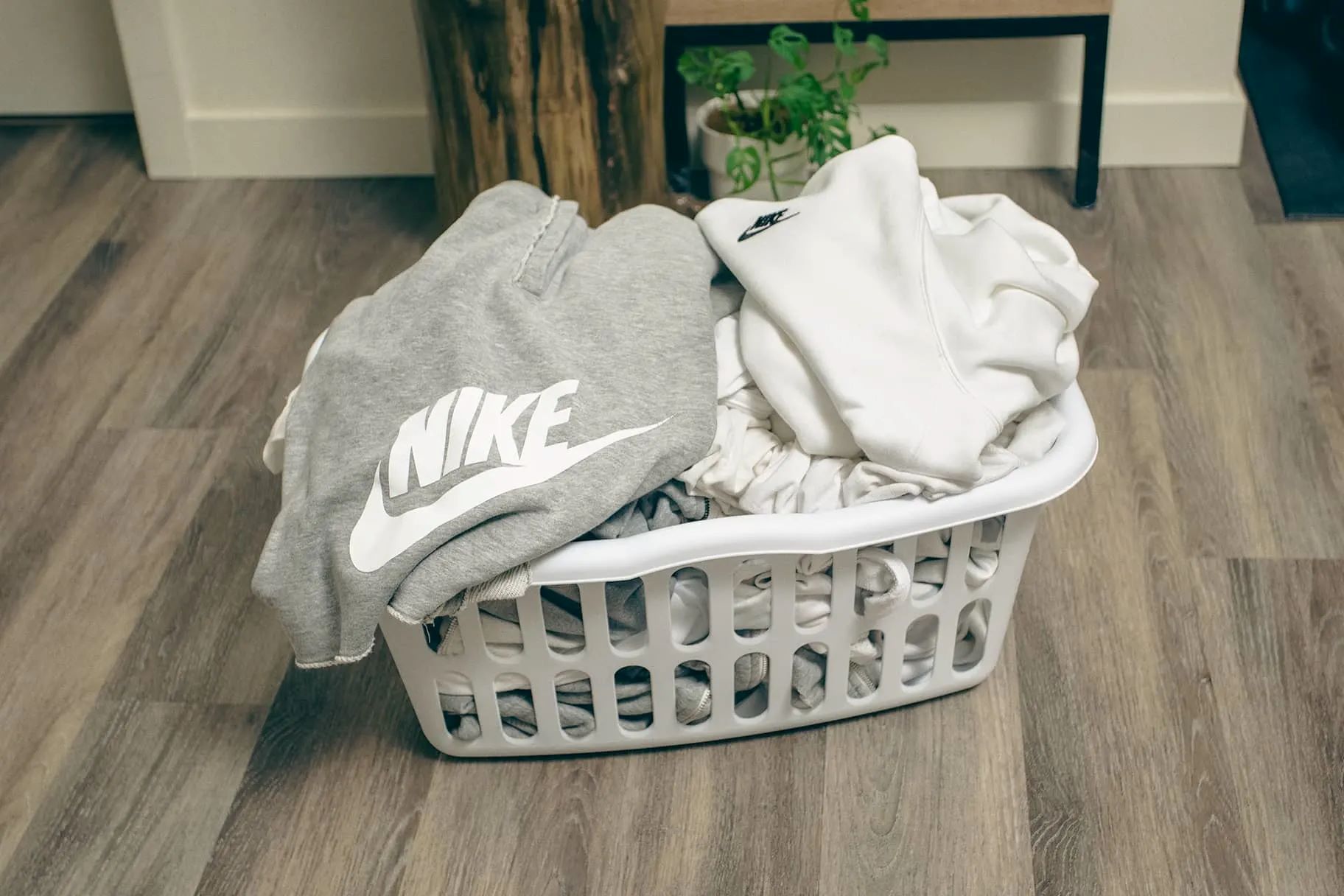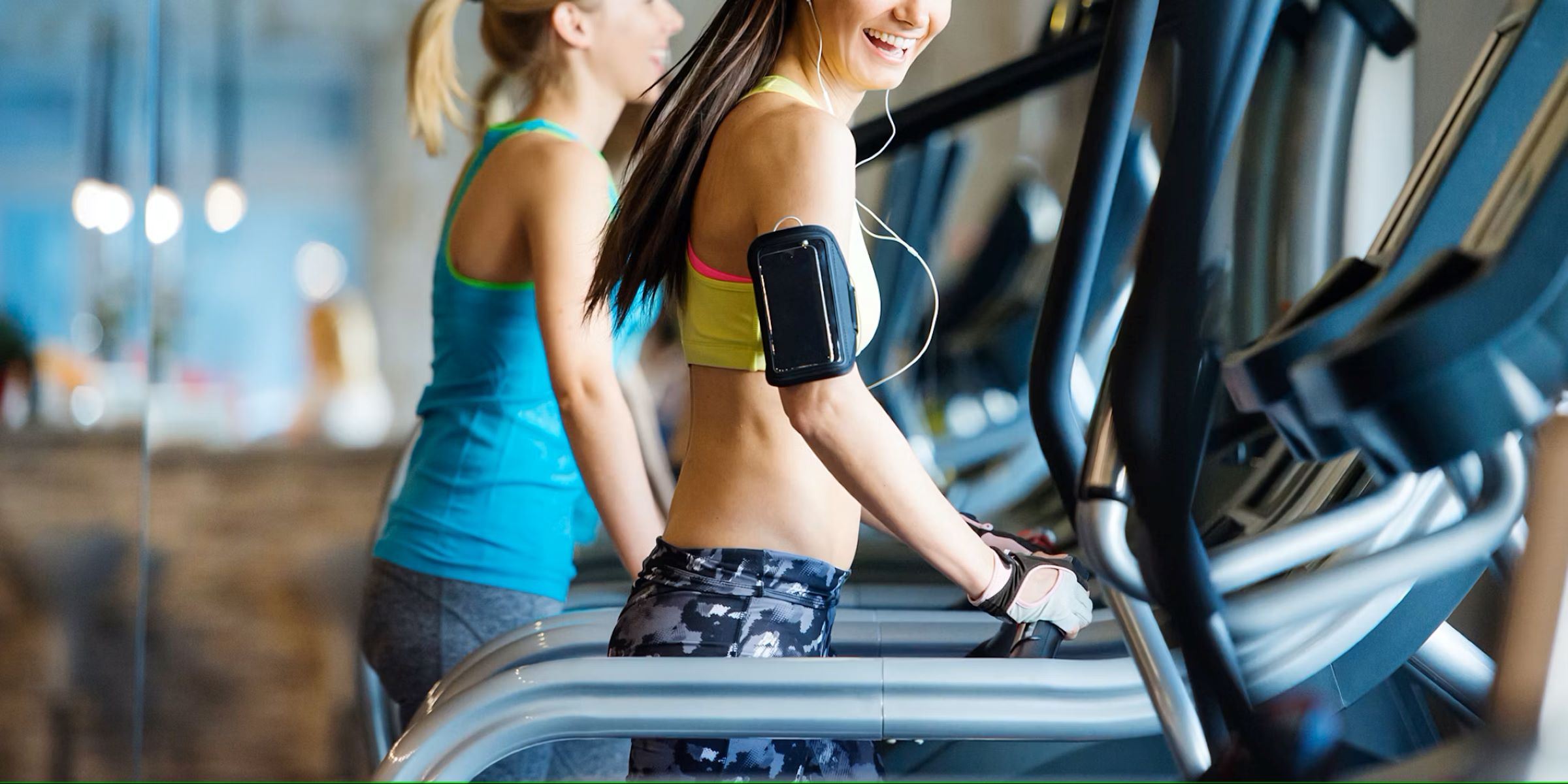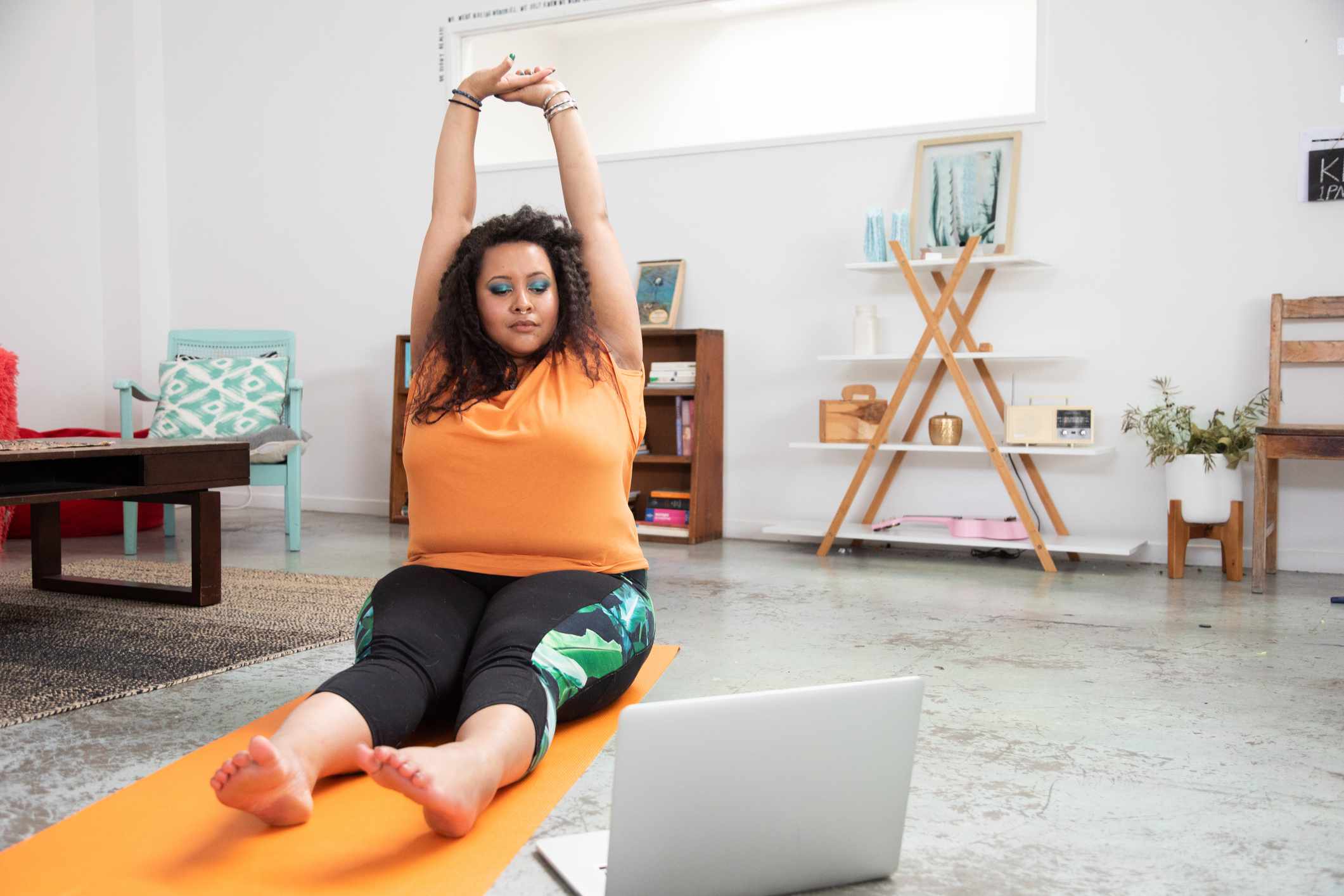

Featured
How To Make Your Own Workout Clothes
Modified: January 22, 2024
Learn how you can create your own workout clothes with our featured guide. Save money and customize your activewear to suit your style and needs.
Introduction
Welcome to the world of DIY workout clothes! There’s something rewarding about creating your own activewear that not only fits your style but also enhances your performance. Whether you’re a fitness enthusiast or a fashion lover, making your own workout clothes allows you to put your creativity to the test and customize your wardrobe to suit your needs.
In this article, we will guide you through the step-by-step process of making your own workout clothes. From choosing the right fabric to adding the finishing touches, we will cover everything you need to know to create stylish and functional activewear.
Why bother making your own workout clothes when there are plenty of options available in stores? Well, for starters, making your own gives you the opportunity to experiment with different fabrics and designs that you won’t find off the rack. You can choose materials that wick away sweat, provide breathability, and offer the right amount of stretch for your specific activities. Plus, when you make your own clothes, you have complete control over the fit and can ensure that your activewear is tailored to your body.
Not to mention, making your own workout clothes can be a fun and fulfilling project. It allows you to unleash your creativity, express your personal style, and gain a sense of accomplishment. So, let’s dive into the steps of creating your own workout clothes!
Step 1: Choosing the Right Fabric
When it comes to creating your own workout clothes, one of the most important considerations is choosing the right fabric. The fabric you select will determine the comfort, durability, and performance of your activewear. Here are some key factors to keep in mind when choosing the fabric:
- Moisture-wicking properties: Look for fabrics that have moisture-wicking properties. These fabrics are designed to pull sweat away from your skin and allow it to evaporate quickly, keeping you dry and comfortable during your workouts. Popular moisture-wicking fabrics include polyester blends and synthetic fibers like spandex.
- Breathability: Good airflow is essential for staying cool and preventing overheating during intense workouts. Opt for fabrics that are breathable and allow air to circulate freely, such as mesh or lightweight knits.
- Stretch and flexibility: Workout clothes need to provide a good range of motion and flexibility. Choose fabrics that have a high percentage of stretch, like spandex or elastane blends. These fabrics will allow you to move comfortably during exercises.
- Durability: Your workout clothes will need to withstand frequent use and washing. Look for fabrics that have good durability and can withstand stretching, pulling, and sweat without losing their shape or color. Nylon and polyethylene blends are known for their durability.
- UV protection: If you enjoy outdoor workouts, consider fabrics that offer UPF (Ultraviolet Protection Factor) to shield your skin from the harmful effects of the sun’s rays.
It’s also worth considering the specific type of workout you’ll be doing. For activities like yoga or Pilates, you may prefer soft and stretchy fabrics like cotton or bamboo. For high-intensity workouts or running, moisture-wicking and breathable fabrics like polyester or nylon blends with spandex would be more suitable.
Additionally, take into account your personal preferences and comfort. Some people may have sensitivities to certain fabrics, so it’s essential to choose materials that feel good against your skin. You can check fabric samples or touch the fabric in person before making a purchase.
Take your time when selecting the fabric for your workout clothes. Consider the factors mentioned above and find a balance between comfort, performance, and style. Choosing the right fabric will lay the foundation for creating activewear that you’ll love to wear.
Step 2: Taking Accurate Measurements
Once you’ve chosen the perfect fabric for your workout clothes, the next step is to take accurate measurements of your body. This step is crucial to ensure that your activewear fits you well and complements your figure. Follow these steps to take precise measurements:
- Invest in a flexible measuring tape: To accurately measure your body, it’s important to have a flexible measuring tape. These tapes can easily wrap around your body and provide accurate measurements.
- Wear fitted clothing: When taking your measurements, wear fitted clothing or be in your undergarments. This will help you get the most accurate measurements without any added bulk or interference from loose clothing.
- Measure your bust/chest: Wrap the measuring tape around the fullest part of your bust or chest. Ensure that the tape is parallel to the ground and not too tight or loose.
- Measure your waist: Locate your natural waistline, which is the narrowest part of your torso. Wrap the measuring tape around your waist, making sure it’s snug but not too tight.
- Measure your hips: Measure the fullest part of your hips, making sure the tape is parallel to the ground. This measurement is essential for creating bottoms that fit well.
- Measure your inseam: For bottoms such as leggings or shorts, measure the inseam by starting from the inside of your leg, where it meets your groin, down to the desired length.
- Take additional measurements: Depending on the style of workout clothes you’re making, you may need to take measurements for your arms, legs, or shoulders. Measure the circumference of these areas to ensure a proper fit.
It’s important to remember that everyone’s body is unique, and standard sizing may not always be an accurate representation of your measurements. Taking your own measurements will help you create workout clothes that fit you well and flatter your body shape.
When taking measurements, it’s also helpful to have someone assist you to ensure accuracy. If you’re unable to find a measuring tape, you can use a piece of string or ribbon and then measure it against a ruler or yardstick.
Once you have your measurements, jot them down in a notebook or create a digital record for easy reference. These measurements will be essential when choosing the right pattern or design for your workout clothes.
By taking accurate measurements, you will be able to create activewear that not only fits well but also makes you feel confident and comfortable in your own skin.
Step 3: Selecting a Pattern or Design
Now that you have your fabric and accurate measurements, it’s time to choose a pattern or design for your workout clothes. This step allows you to unleash your creativity and personalize your activewear. Here are some tips to help you select the perfect pattern or design:
- Explore pattern options: Do some research online or visit your local fabric store to browse through pattern catalogs. Look for patterns specifically designed for activewear or athleisure wear. These patterns often feature details such as extra stretch, gussets, and reinforced seams to accommodate movement.
- Consider your skill level: If you’re new to sewing or relatively inexperienced, opt for patterns labeled as “beginner-friendly” or “easy.” These patterns typically have simple construction and detailed instructions that make them more accessible for beginners. As you gain confidence and skills, you can challenge yourself with more complex patterns.
- Think about your body shape: Choose a pattern that compliments your body shape and fits well according to your measurements. Some patterns are designed for specific body types, such as hourglass, pear, or rectangular shapes. Pay attention to the size chart provided with the pattern to ensure the best fit.
- Consider the style and functionality: Determine what type of workout clothes you want to make and for what purpose. Do you need leggings for yoga or shorts for running? Consider the desired length, waistband style, and any additional features like pockets or ventilation. Make sure the pattern has the elements you’re looking for.
- Check the reviews and recommendations: Before purchasing a pattern, read reviews from other sewists who have used it. Look for any common issues or notable feedback. You can also join online sewing communities or forums to ask for recommendations or advice on specific patterns.
Additionally, don’t be afraid to customize and modify the pattern to fit your personal style. You can add unique design details like color-blocked panels, contrasting topstitching, or even mix and match different pattern pieces from various designs. These small changes can make your workout clothes truly one-of-a-kind.
Lastly, make sure to carefully study the instructions and cutting layout provided with the pattern. Familiarize yourself with the markings, symbols, and notations used in the pattern, and take note of any special techniques or tools required.
By selecting a pattern or design that suits your preferences and abilities, you’ll be on your way to creating stylish and functional workout clothes that reflect your personal style and flair.
Step 4: Cutting and Preparing the Fabric
Now that you have chosen a pattern or design for your workout clothes, it’s time to take your fabric and prepare it for cutting. Properly cutting and preparing the fabric is essential for achieving accurate and well-fitting garments. Here’s a step-by-step guide on how to cut and prepare your fabric:
- Wash and pre-shrink the fabric: Before starting any cutting or sewing, it’s crucial to pre-wash your fabric according to the manufacturer’s instructions. This step ensures that any potential shrinkage occurs before you sew the garment. It also removes any chemical residue and allows the fabric to relax, giving you more accurate measurements.
- Iron the fabric: Once the fabric is clean and dry, give it a good ironing to remove any wrinkles or creases. This will make it easier to work with and ensure accurate cutting.
- Lay out the pattern: Lay the fabric on a clean, flat surface. Make sure the fabric is smooth and free from any wrinkles. Place the pattern pieces on top of the fabric, following the layout diagram provided with the pattern. Pay attention to grainlines, selvedges, and any directional prints on the fabric.
- Pin or weigh down the pattern: Use fabric pins or pattern weights to secure the pattern pieces in place. Make sure the pattern is smooth and not shifting before you start cutting.
- Transfer markings: Use tailor’s chalk, fabric marking pens, or pins to transfer any markings or notches from the pattern onto the fabric. These markings will help you match the pieces correctly during the sewing process.
- Carefully cut the fabric: Use sharp fabric scissors or a rotary cutter to cut along the lines of the pattern pieces. Take your time and ensure clean and precise cuts. Double-check the pattern instructions for any specific cutting instructions or notations.
- Label and organize the pieces: As you cut each piece, label them with the pattern piece number or name. This will help you identify and organize the pieces during the sewing process.
It’s essential to be patient and attentive while cutting your fabric. Accuracy is key to ensure that all the pieces fit together smoothly during construction. Take breaks if needed and double-check your work before moving on.
Remember to keep any leftover scraps or smaller fabric pieces. They can be utilized for making smaller details like waistband casings, drawstrings, or even coordinating accessories.
By carefully cutting and preparing your fabric, you set the foundation for a successful sewing process and ultimately create professional-looking workout clothes that fit impeccably.
Step 5: Sewing the Workout Clothes
Now that you have your fabric pieces cut and labeled, it’s time to sew them together and bring your workout clothes to life. Sewing is where all the individual pieces start to come together to form a cohesive garment. Follow these steps to sew your workout clothes:
- Refer to the pattern instructions: Take a careful look at the sewing instructions provided with your chosen pattern. Familiarize yourself with the order of construction and any specific techniques or stitches mentioned.
- Pin or clip pieces together: Use sewing pins or fabric clips to secure the fabric pieces together, right sides facing each other. This ensures that the fabric stays in place as you sew.
- Start sewing: Using a sewing machine or a serger, start stitching along the designated seam lines indicated in the pattern instructions. Follow the recommended stitch length and tension settings for your fabric. Backstitch at the beginning and end of each seam to secure the stitches.
- Press the seams: After stitching each seam, press the seam allowances with an iron. This helps set the stitches and gives your workout clothes a professional finish. Press the seams open or towards one side, as specified in the pattern instructions.
- Continue sewing: Follow the pattern instructions and repeat the process of pinning, sewing, and pressing for each subsequent seam or construction step. Take your time and pay attention to any specific construction details, such as adding elastic, creating darts, or attaching cuffs.
- Try on for fit: It’s a good idea to periodically try on your garment during the sewing process. This will allow you to make any necessary adjustments or alterations while it’s still relatively easy to do so.
- Finish raw edges: Once all the seams are sewn, you can finish the raw edges to prevent fraying. You can use various techniques like zigzag stitching, overlocking, or binding the seams with bias tape.
- Add closures and finishing touches: Consult the pattern instructions for any closures or finishing touches required. This could include adding zippers, buttons, or elastic waistbands. Follow the instructions carefully to ensure a secure and professional result.
Throughout the sewing process, take your time and be attentive to details. Check your work after each step to catch any mistakes or inconsistencies before they become more challenging to fix.
If you’re new to sewing, don’t be discouraged if your first attempt isn’t perfect. Practice makes perfect, and each project will improve your skills. Embrace the learning process and enjoy the satisfaction of creating your own workout clothes.
Once you’ve completed the sewing process, give your finished garment a final press with the iron to give it that polished look. Your carefully sewn workout clothes are now ready to be worn and enjoyed!
Step 6: Adding Finishing Touches
Adding finishing touches is the final step in creating your own workout clothes. These details not only enhance the overall look of the garment but also contribute to its functionality and wearability. Here are some important finishing touches to consider:
- Hemming: Hemming is the process of folding and stitching the bottom edges of your garment. Depending on the style and length of your workout clothes, you may need to hem the sleeves, pant legs, or the bottom hem. Follow the pattern instructions for the recommended hemming technique and measurements.
- Topstitching: Topstitching is a decorative and functional stitching that is visible on the exterior of the garment. It adds strength to seams and gives a professional finish. Consider using contrasting or coordinating thread to make your topstitching stand out.
- Adding labels or tags: Personalize your workout clothes by adding labels or tags with your name, logo, or a motivational message. You can sew them onto the inside or outside of the garment using a small, narrow zigzag stitch or by hand stitching.
- Inserting elastic or drawstrings: Depending on the design of your workout clothes, you may need to insert elastic or drawstrings. Elastic provides stretch and helps the garment stay in place, while drawstrings allow for adjustable fit and added style. Follow the pattern instructions for precise placement and technique.
- Applying reflective or safety elements: If you plan to use your workout clothes for outdoor activities, consider adding reflective elements for visibility, especially if you plan to exercise during low-light conditions. You can sew on reflective tape or use fabric paints to create reflective designs.
- Clean up loose threads: Trim any loose threads that may be sticking out from the seams or finishing touches. This final touch will give your garment a polished appearance.
- Try on and make final adjustments: With all the finishing touches added, try on your completed workout clothes once more. Check for fit, comfort, and any final adjustments that may be required. Make any necessary alterations to achieve the desired fit and comfort.
Remember, the finishing touches are what make your workout clothes unique and personal to you. Take the time to add these details carefully, and don’t be afraid to get creative or add your own personal flair.
Once you’re satisfied with the finishing touches, your workout clothes are complete and ready to be worn with pride. Enjoy the process of creating functional and stylish activewear that reflects your personal style and boosts your confidence during workouts.
Step 7: Trying on and Making Adjustments
The final step in creating your own workout clothes is to try them on and make any necessary adjustments for the perfect fit. Trying on the garment allows you to assess the overall look, comfort, and functionality of the piece. Here’s what you need to do:
- Put on the completed workout clothes: Wear the garment and take note of how it feels on your body. Pay attention to any areas that feel too tight, too loose, or uncomfortable.
- Check the fit: Look in a full-length mirror and evaluate the fit of the garment. Are the shoulders sitting correctly? Is the waistband in the right position? Take note of any major fit issues or areas that may need adjustment.
- Make fit adjustments: If you notice any fit issues, make the necessary adjustments. This may include taking in or letting out seams, adjusting the length, or modifying the waistband. Refer to your sewing pattern instructions for guidance on making these adjustments.
- Try the garment in different movements: Perform a few exercises or movements that you typically do during your workouts. This will help you assess the functionality of the garment and whether it allows for a full range of motion without restrictions.
- Evaluate comfort and performance: Assess how comfortable the garment feels during movement. Is the fabric breathable? Does it wick away sweat effectively? Consider how well the garment performs in terms of its intended purpose.
- Make additional style adjustments (Optional): If you desire any additional style changes or personalizations, now is the time to make those adjustments. This may include adding embellishments, altering the neckline, or modifying the length.
- Make final alterations: Once you’ve made all necessary fit and style adjustments, alter the garment accordingly. This may involve resewing seams, trimming excess fabric, or making any final tweaks that will ensure the best possible fit.
Remember that fit is subjective, and what feels comfortable and flattering to you may differ from others. Trust your instincts and make adjustments based on your personal preferences and needs.
After making the final adjustments, try on the garment once more to ensure that all the modifications have resulted in a better fit and improved comfort. Once you’re satisfied with the fit and feel, you can confidently wear your unique and custom-made workout clothes for your fitness endeavors.
Creating your own workout clothes allows you to have garments that are tailored to your body and style. Embrace the process and enjoy the satisfaction of wearing activewear that you’ve made with your own hands.
Conclusion
Congratulations! You have successfully learned the step-by-step process of making your own workout clothes. From choosing the right fabric to adding the finishing touches, you have acquired the skills to create stylish and functional activewear that fits your body and suits your style.
By making your own workout clothes, you have the freedom to experiment with different fabrics, designs, and customization options that may not be readily available in stores. You can create activewear that is perfectly tailored to your body, provides optimal performance, and reflects your unique personality.
Remember, choosing the right fabric is crucial in creating comfortable and functional workout clothes. Consider factors such as moisture-wicking properties, breathability, stretch, durability, and UV protection when selecting the fabric.
Taking accurate measurements ensures that your activewear fits you perfectly. Invest in a flexible measuring tape and follow the pattern instructions to ensure precise measurements.
Selecting a pattern or design that suits your skill level, body shape, and preferred style is essential. Explore pattern options, consider your body shape, and review the recommendations of others who have used the pattern before diving in.
Cutting and preparing the fabric is a critical step in achieving accurate and well-fitting garments. Take your time to pre-wash, iron, lay out the pattern, and carefully cut the fabric for precise results.
The sewing process brings all the fabric pieces together and allows your workout clothes to take shape. Follow the pattern instructions, pin the pieces together, sew the seams, and press them for a professional finish.
Adding finishing touches such as hems, topstitching, labels, and closures gives your workout clothes a polished and personalized look. Take the time to pay attention to these details and make sure they reflect your personal style.
Finally, try on the completed garment, make any necessary adjustments for fit and comfort, and give it a final evaluation before wearing it with confidence.
By creating your own workout clothes, you have the opportunity to express your creativity, ensure a perfect fit, and have activewear that caters to your specific needs and preferences. So, grab your sewing machine and unleash your inner fashion designer to enjoy the satisfaction of wearing unique and handmade workout clothes!
